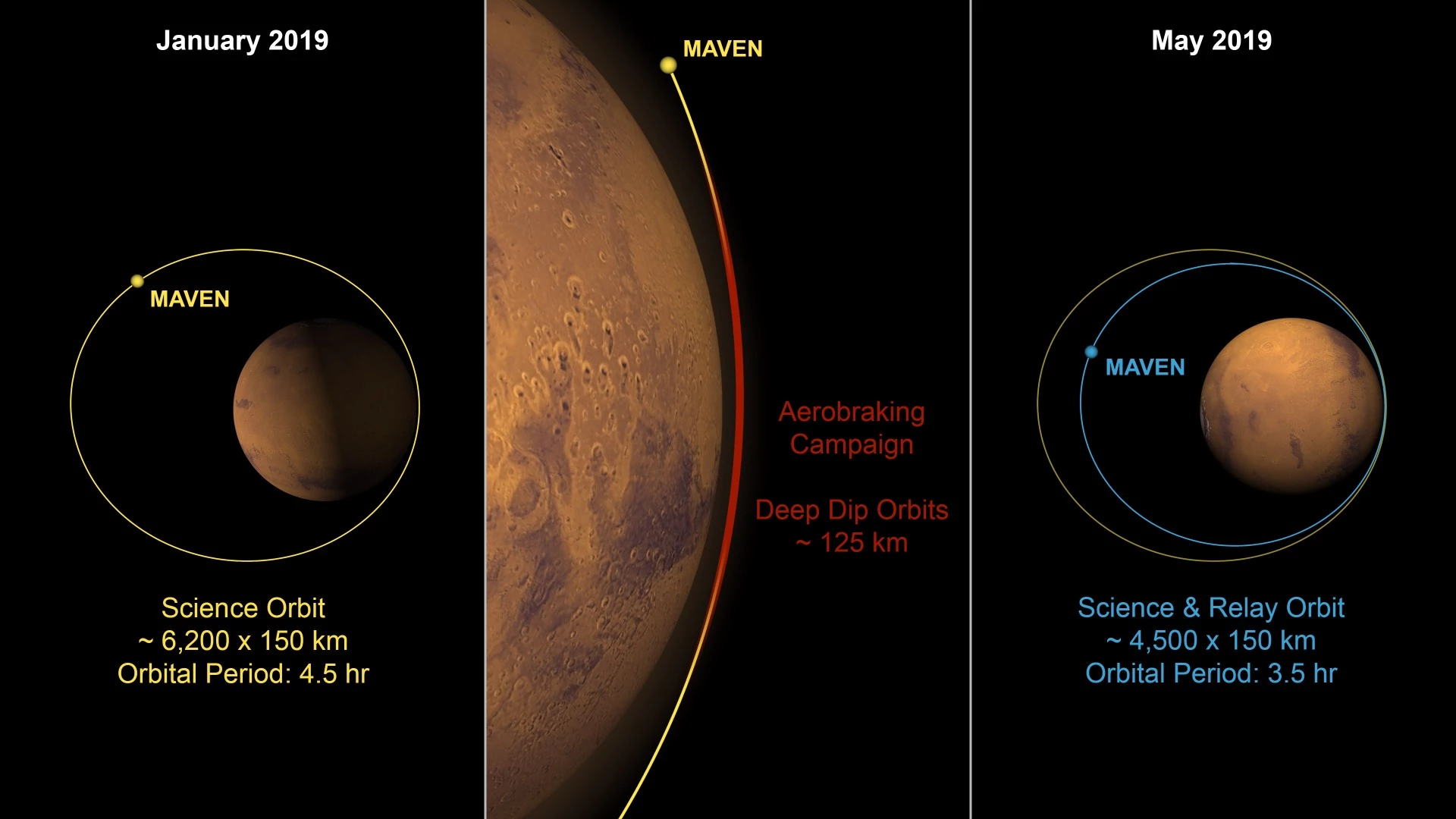NASA's Mars Atmosphere and Volatile Evolution (MAVEN) orbiter is taking on a new job as it shifts into a lower orbit to act as a communications relay for the Mars 2020 mission slated to launch next year. Under commands from mission control, the unmanned science probe will dip into the upper layers of the Martian atmosphere, which will slow it down and reduce its apogee (or highest altitude) from 3,850 to 2,800 mi (6,200 to 4,500 km).
For the past four years, MAVEN has been busy studying the Martian atmosphere, its mechanisms, and why the atmosphere is slowly escaping into space. To achieve this, the spacecraft was placed in an eccentric orbit that took it out as far as 3,850 mi (6,196 km) from the planet's surface, and as close in as 93 mi (150 km).
So this isn't completely new territory for Maven. The orbiter has actually dipped into the atmosphere on nine previous occasions to gather data. This means that MAVEN is capable of a maneuver known as aerobraking. That is, by firing its thrusters, the spacecraft can be made to skim into the upper reaches of the Martian atmosphere, slowing it down and causing its orbit to gradually decrease by about 1,000 mi (1,700 km).
According to NASA, this shift in the orbit will not only bring MAVEN closer to Mars, but it will decrease its orbital period, so it will circle the Red Planet 6.8 times per day instead of 5.3 times. This means that MAVEN will be in a better position to relay data to and from the Mars 2020 rover and make contact more often using its ultra high-frequency radio transceiver.

MAVEN was originally intended to operate for two years, but the spacecraft is continuing to operate normally, and mission control is managing its fuel on the assumption it will continue to function until 2030. Meanwhile, it will carry on with both its atmospheric studies and its new relay duties.
NASA says that the aerobraking maneuver will take place over the next two and a half months, or 360 orbits. Once the thrusters have set the craft on its new trajectory, the atmosphere will do the rest of the work.
"The MAVEN spacecraft has done a phenomenal job teaching us how Mars lost its atmosphere and providing other important scientific insights on the evolution of the Martian climate," says Jim Watzin, director of NASA's Mars Exploration Program. "Now we're recruiting it to help NASA communicate with our forthcoming Mars rover and its successors."
Source: NASA






